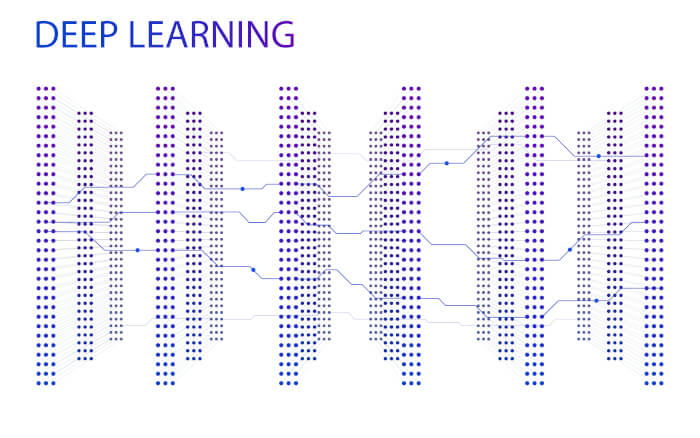Keras is a high-level neural networks open source API, written in Python and capable of running on top of TensorFlow, Microsoft Cognitive Toolkit, MXNet, or Theano.
Keras has stronger adoption in both the industry and the research community than any other deep learning framework except TensorFlow (and Keras is commonly used together with TensorFlow).
Keras has been adopted by deep learning researchers, and researchers at large scientific organizations, in particular CERN and NASA.
Keras is compatible with Python 2.7-3.6.
Features include:
- Allows for easy and fast prototyping (through user friendliness, modularity, and extensibility).
- Provides implementations of commonly used neural network building blocks such as layers, objectives, activation functions, optimizers.
- Supports both convolutional networks and recurrent networks, as well as combinations of the two. Convolutional networks currently set the state of the art in visual recognition.
- Code and pre-trained weights, which have been trained on the ImageNet database, are available for the following image classification models:
- Xception – a novel deep convolutional neural network architecture inspired by Inception, where Inception modules have been replaced with depthwise separable convolutions.
- VGG16 – Very Deep Convolutional Networks for Large-Scale Visual Recognition with 16 weight layers.
- VGG19 – Very Deep Convolutional Networks for Large-Scale Visual Recognition with 19 weight layers.
- ResNet50 – this network introduces residual learning. ResNet50 is a 50 layer Residual Network.
- Inception v3 – a variant of Inception-v2 which adds BN-auxiliary.
- Inception-ResNet v2 – a convolutional neural network (CNN) that achieves a new state of the art in terms of accuracy on the ILSVRC image classification benchmark.
- MobileNet v1 – a family of mobile-first computer vision models for TensorFlow, designed to effectively maximize accuracy while being mindful of the restricted resources for an on-device or embedded application.
- Runs seamlessly on CPU and GPU.
ImageNet is a common academic data set in machine learning for training an image recognition system.
Website: keras.io
Support: FAQ, GitHub code repository
Developer: François Chollet, Google, Microsoft, and many other contributors
License: MIT License
Keras is written in Python. Learn Python with our recommended free books and free tutorials.
Return to Deep Learning with Python
| Popular series | |
|---|---|
| The largest compilation of the best free and open source software in the universe. Each article is supplied with a legendary ratings chart helping you to make informed decisions. | |
| Hundreds of in-depth reviews offering our unbiased and expert opinion on software. We offer helpful and impartial information. | |
| The Big List of Active Linux Distros is a large compilation of actively developed Linux distributions. | |
| Replace proprietary software with open source alternatives: Google, Microsoft, Apple, Adobe, IBM, Autodesk, Oracle, Atlassian, Corel, Cisco, Intuit, and SAS. | |
| Awesome Free Linux Games Tools showcases a series of tools that making gaming on Linux a more pleasurable experience. This is a new series. | |
| Machine Learning explores practical applications of machine learning and deep learning from a Linux perspective. We've written reviews of more than 40 self-hosted apps. All are free and open source. | |
| New to Linux? Read our Linux for Starters series. We start right at the basics and teach you everything you need to know to get started with Linux. | |
| Alternatives to popular CLI tools showcases essential tools that are modern replacements for core Linux utilities. | |
| Essential Linux system tools focuses on small, indispensable utilities, useful for system administrators as well as regular users. | |
| Linux utilities to maximise your productivity. Small, indispensable tools, useful for anyone running a Linux machine. | |
| Surveys popular streaming services from a Linux perspective: Amazon Music Unlimited, Myuzi, Spotify, Deezer, Tidal. | |
| Saving Money with Linux looks at how you can reduce your energy bills running Linux. | |
| Home computers became commonplace in the 1980s. Emulate home computers including the Commodore 64, Amiga, Atari ST, ZX81, Amstrad CPC, and ZX Spectrum. | |
| Now and Then examines how promising open source software fared over the years. It can be a bumpy ride. | |
| Linux at Home looks at a range of home activities where Linux can play its part, making the most of our time at home, keeping active and engaged. | |
| Linux Candy reveals the lighter side of Linux. Have some fun and escape from the daily drudgery. | |
| Getting Started with Docker helps you master Docker, a set of platform as a service products that delivers software in packages called containers. | |
| Best Free Android Apps. We showcase free Android apps that are definitely worth downloading. There's a strict eligibility criteria for inclusion in this series. | |
| These best free books accelerate your learning of every programming language. Learn a new language today! | |
| These free tutorials offer the perfect tonic to our free programming books series. | |
| Linux Around The World showcases usergroups that are relevant to Linux enthusiasts. Great ways to meet up with fellow enthusiasts. | |
| Stars and Stripes is an occasional series looking at the impact of Linux in the USA. | |
